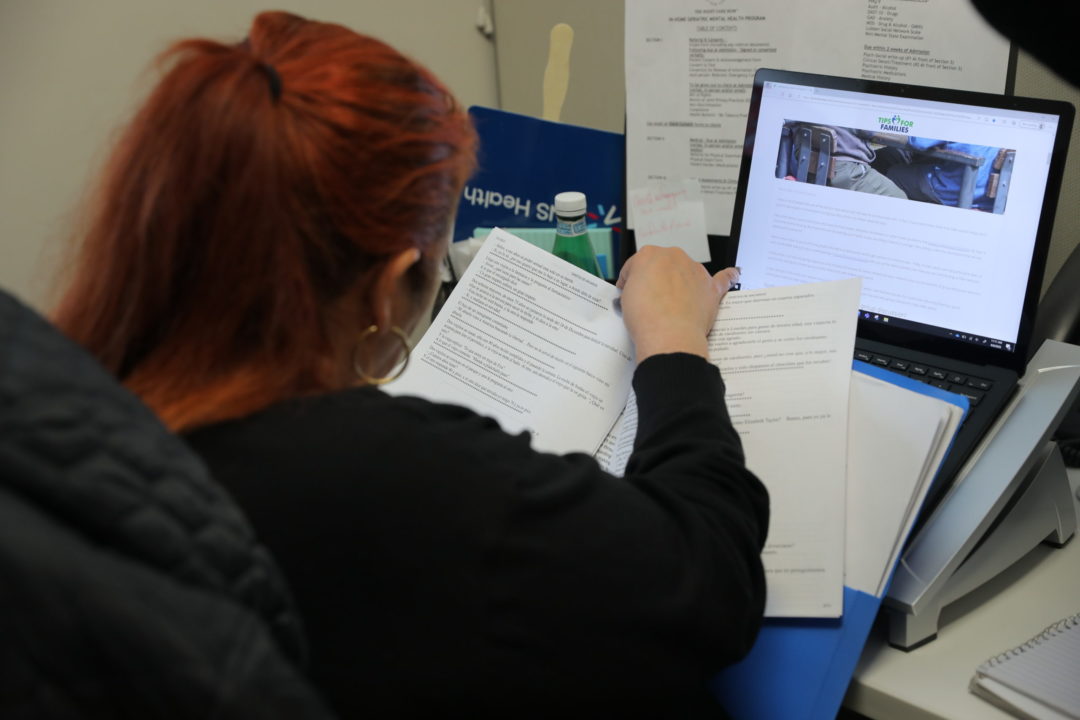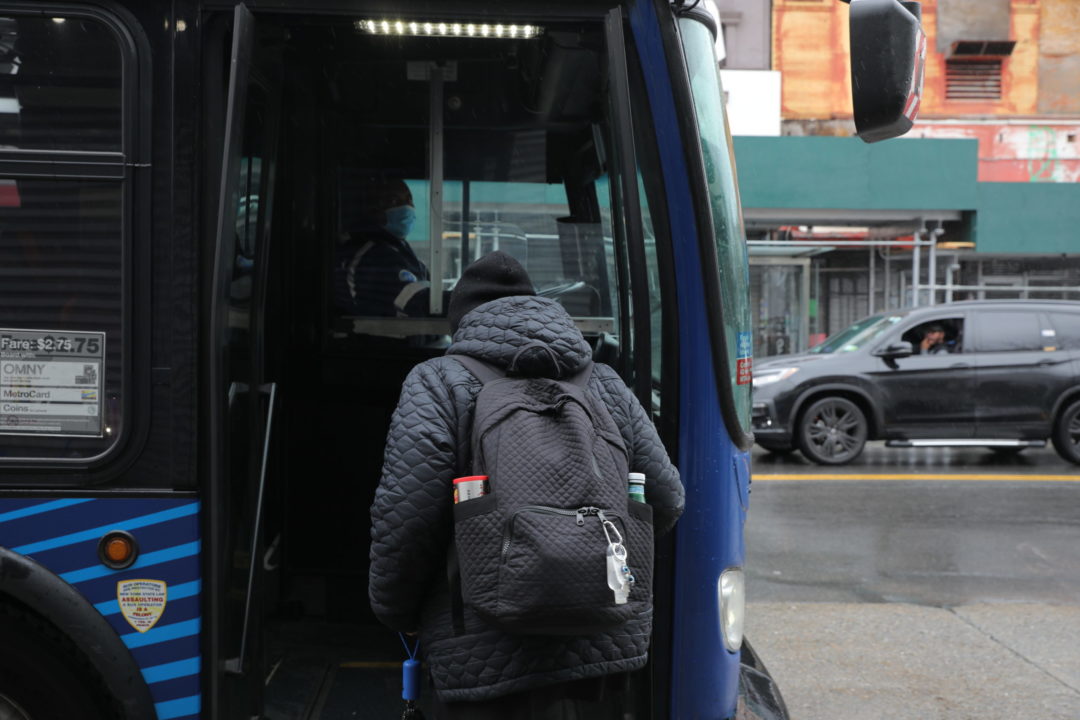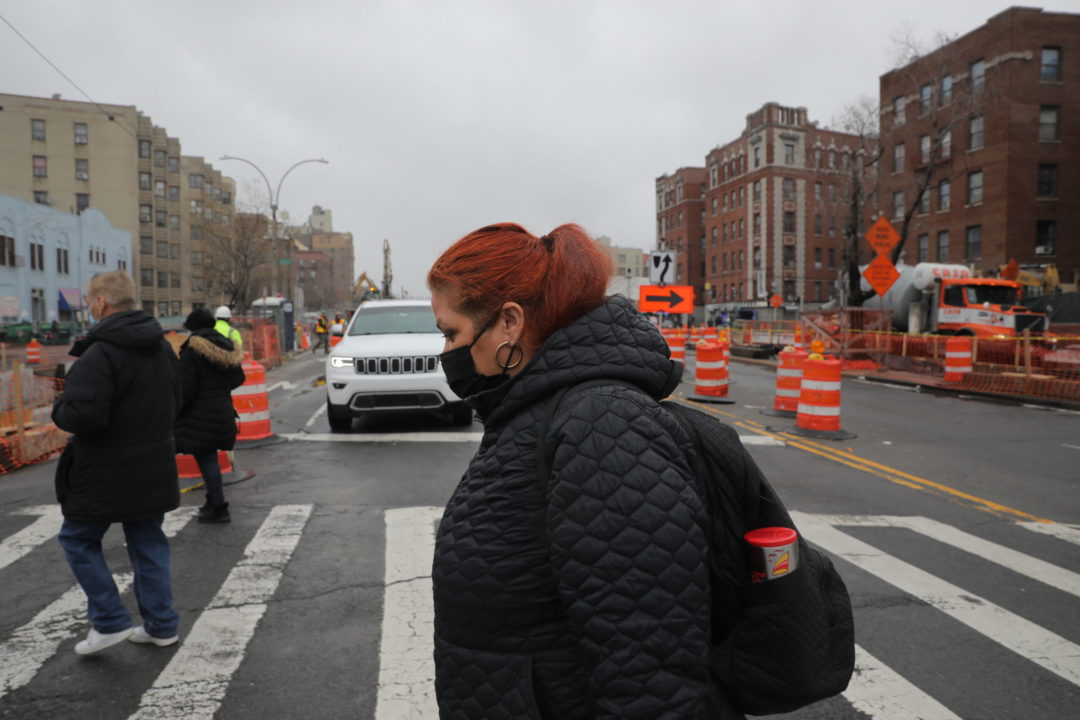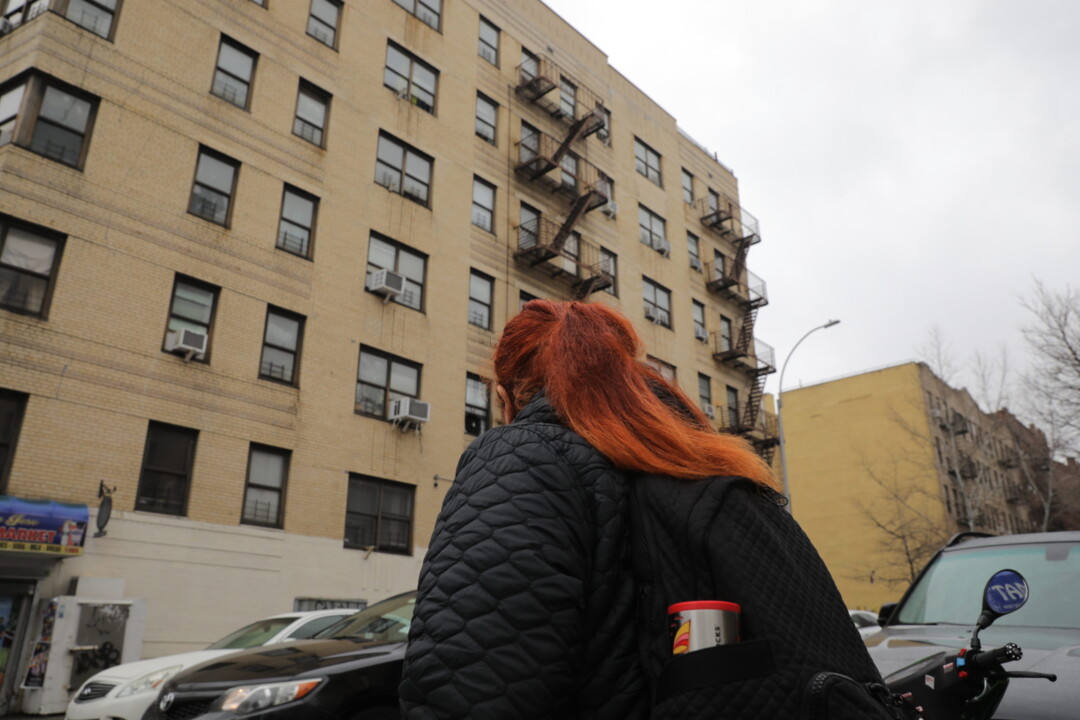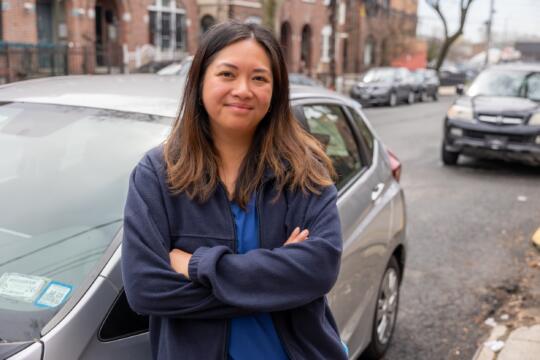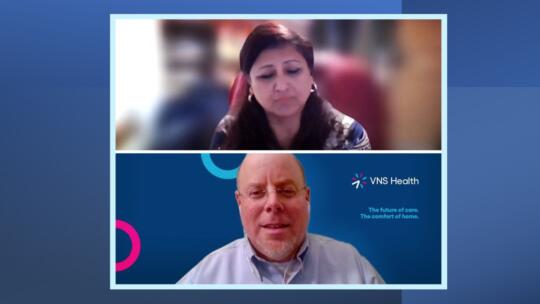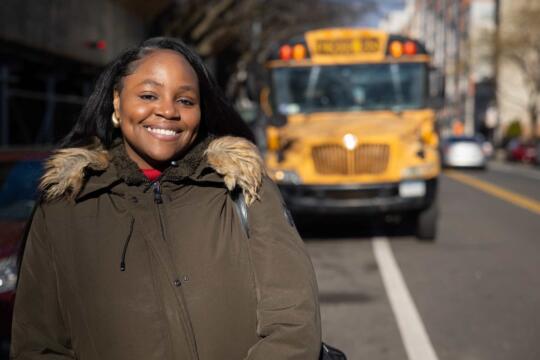A Day in the Life of Bronx Geriatric Outreach Mental Health Specialist, Carmen Tirado
Welcome to “A Day in the Life”—a Frontline series that follows team members from different parts of VNSNY as they go through a typical day at work.
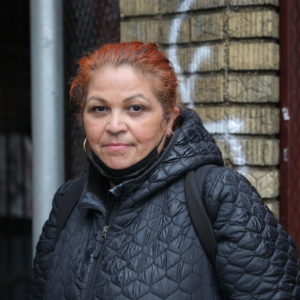
Frontline recently followed Mental Health Specialist Carmen Tirado through her typical Wednesday. A 26-year VNSNY veteran, Carmen, who is out in the field three days a week, joined VNSNY Behavioral Health’s Geriatric Outreach program in 2000. For the past seven years, she has been based out of the FRIENDS office on East 153rd Street in the South Bronx.
4:30 a.m.
I was born and raised in the South Bronx, but now I call Bridgeport, Connecticut home. I get up at 4:30 a.m., take a shower, start my coffee maker, get dressed, get my coffee, put my makeup on, do my hair, and then I’m ready to go! My daughter drops me off at the Bridgeport Metro-North train station around 5:45 a.m., and I take the 6 o’clock train. It’s about a two-hour ride down to the Fordham station, and from there I’ll take the Bx15 bus to the FRIENDS office.
I’m glad to be giving back to the Bronx community. It feels satisfying to work in the area where I grew up. I’ve even met clients whose children I’ve gone to school with! I feel good that I didn’t lose that touch with my community. I work with patients aged 60 and up, and my day consists mostly of making home visits. Right now, my caseload consists of seven patients, all over the Bronx. Tuesdays are usually spent entirely in the field, and Wednesdays are split between the office and the field. On Thursdays, I’m usually in the office doing paperwork, and occasionally making a home visit. Throughout each day, I also take calls, answer emails, and reach out to new clients. On top of my normal schedule, I participate in VNSNY outreach activities within the local community and run a weekly support program at Echo Place, a senior residence just off of the Grand Concourse in the Bronx.

8:30 a.m.
Depending on the bus, I get to the FRIENDS office around 8:20 or 8:30 a.m. The first thing I’ll do is work on my agenda for the day and write all of my tasks down. We have two weekly team meetings in the morning: The first is called “the gathering space,” where the Geriatrics team gets together and we talk about different topics—today we talked about teamwork—and the second one is our general team meeting, where we discuss things that are going on in the program or any issues with clients. Afterwards, I’ll prepare for the support group that I facilitate and pick out the topic of discussion.
11:30 a.m.
I take the bus to get to the senior residence where I host my support group. I don’t drive, so I do everything by public transportation. I’ve been running the group for several years. It started after a deadly fire occurred across the street from the residence in 2005. A lot of the seniors were feeling uneasy and stressed out because of what they saw, and at that time there were nurses from VNSNY working with some of them, so the nurses reached out to Geriatric Outreach about going in to speak to them. It’s an open group, but I have five regulars. Because most of the residents in the building are Spanish, the program is conducted entirely in Spanish. We discuss depression, anxiety, dementia, Alzheimer’s, things that are going on in the community, the stress of COVID-19, different topics. Sometimes they’ll bring up a topic they that want to discuss too.
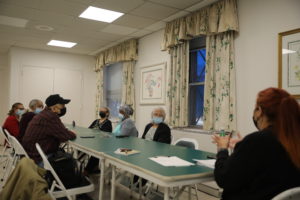
1 p.m.
At today’s support group meeting we’re talking about depression, including its symptoms and what to do if you are feeling depressed. Each of the group members explains how they would deal with it, whether it’s watching TV or seeing a counselor in person. Then I’ll ask them to rate how they feel about their own level of depression at the end of the session. I enjoy the interaction with the seniors—how happy they are when they see me and when they get to speak to each other—and knowing that they’ll come back next week when I do. They love to talk and they love the group. Sometimes it’s hard to keep them quiet, and I have to be a referee!
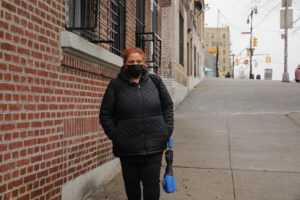
2 p.m.
Now I’ll take the Bx2 bus further down the Grand Concourse, and then walk down the hill to visit a new client on Walton Avenue.
3 p.m.
This is my second time seeing this client after opening her case last week. She was referred to us by one of our VNSNY Home Care social workers, who recommended counseling after she suffered a stroke in February. So she’s been adjusting and getting used to the idea that she has new limitations. She’s very nice and engageable, but she’s also a bit fearful and experiencing some sadness from that.
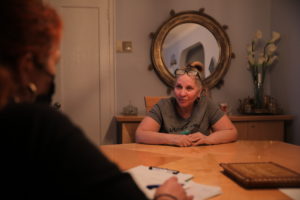
Today, I’ll be giving her a “mini” mental—a memory test that we conduct with all of our clients when we first open up a case—as well as the GAD [Generalized Anxiety Disorder] assessment. I’ll also ask her if she’s going to want mental health linkage so we can start looking for places where we can refer her for additional help.
4 p.m. – 8 p.m.
After the visit, I’ll head back to the Fordham Metro-North station and take the 6 p.m. train up to Connecticut. I normally get home by 8 o’clock.
Mental Health Specialists like Carmen Tirado provide direct social work services to clients, collaborating closely with Licensed Social Workers and other care team members. Through their initial assessments, they identify goals and develop a social work treatment plan, with emphasis on symptom management and psychiatric rehabilitation. They also provide advocacy, assistance, and education to clients and their families as they navigate available mental health resources and community agencies.
Check out the slideshow below for additional photos of Carmen’s day:
